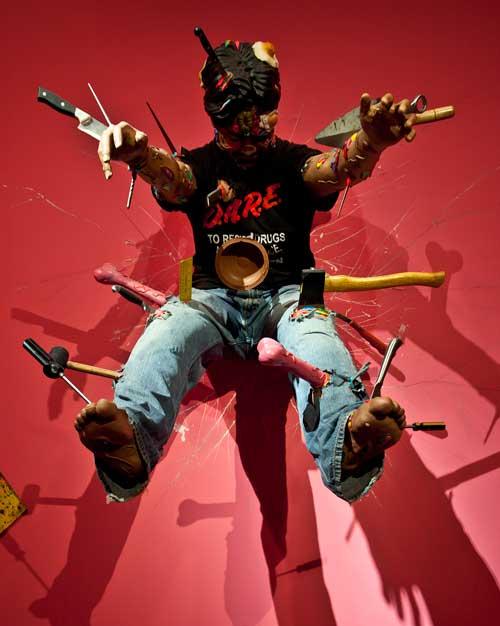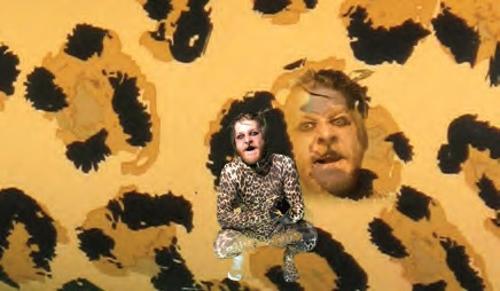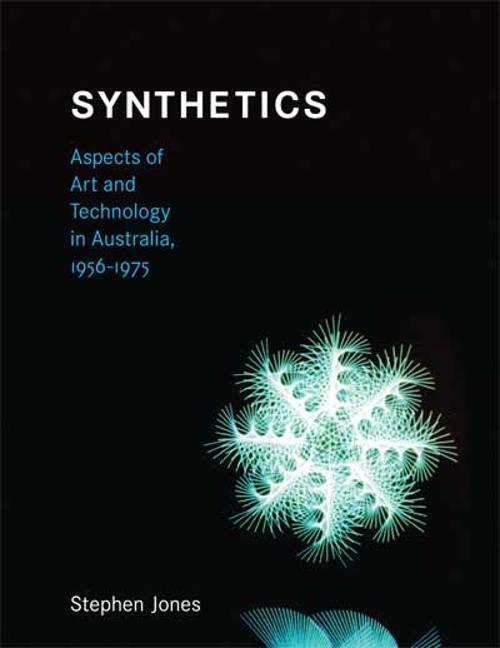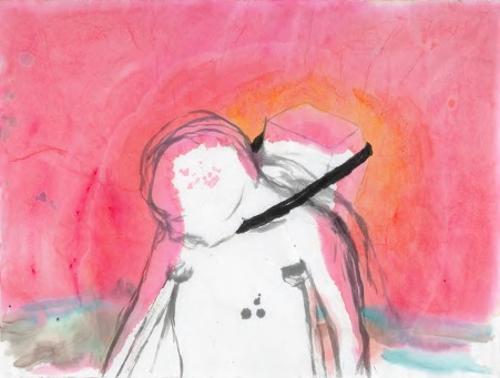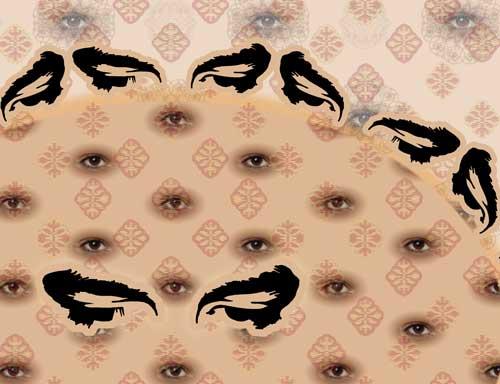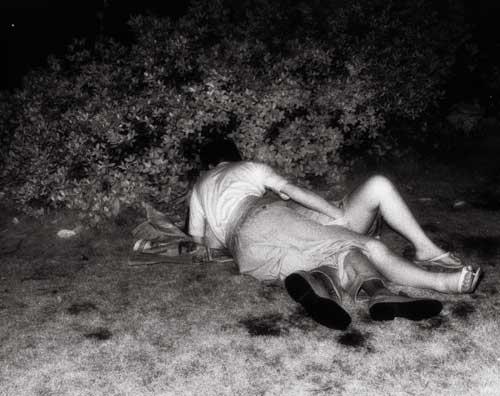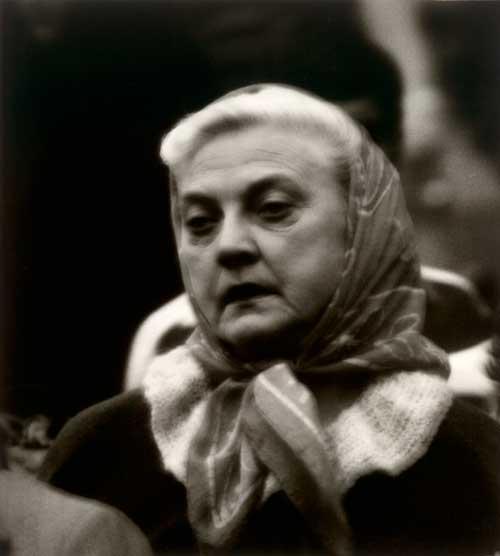
The Nature of Things is the fifth exhibition presented at the newly opened Charles Darwin University Art Gallery and is an impressive survey of artworks collating various perspectives of nature within the Territory’s regional context. CDU Art Collection Curator, Anita Angel has drawn from the collection to compliment its most recent purchase of Carole Wilson’s Mrs Darwin’s Birds, the centrepiece of the exhibition.
Also interacting with artworks from the CDU Art Collection are Wilson’s wall installations and collages made from found contour maps of Australia and beyond. Vintage carpet cut out in the shape of decorative urns reference Wilson’s preoccupation with domestic ornaments. Mrs Darwin’s Garden, a more recent wall installation, consists of a central urn surrounded by a circling assortment of ‘specimens’ of local flora and fauna, reading like a foreign object transplanted in a new world.
Wilson’s artwork presented within the context of the CDU Art Collection carries numerous cultural overlays about the Northern Territory, including the colonial device of owning place via cartographic expeditions. The artist acknowledges the functional language of maps but derives her creative inspiration from their seductive colours and contours rather than any geographical significance they may bear.
Cut-outs of familiar neighbourhoods translate macroscopic scale maps onto a microcosmic scale; rivers and tributaries become veins in leaves or plumage of birds. Orange-footed Scrubfowl and tiny Peaceful Doves commonly roam Darwin backyards, so too plant species such as Frangipanis with their iconic leaves and perfumed flowers or the Carpentaria Palm with its seasonal red ripened fruit. It’s these colours and textures which strike a shift from Wilson’s past in Ballarat to her time spent in Darwin as Studio Lecturer and Post Graduate Supervisor for CDU’s School of Creative Arts and Humanities.
This familiar path of the visiting artist responding to the local NT conditions is repeated throughout The Nature of Things and reflects the many curated exhibitions and printmaking workshops undertaken by Northern Editions Printmaking Studio. Marina Strocchi is represented by seven prints reflecting this artist’s long-term relationship with the Territory; while three etchings by Queensland-based Judy Watson remind us of the legacy of staff who have spent time at the University in seasons past. There is a strong culture of exchanging ideas and sharing artistic knowledge as part of the printmaking process. Here we find this exchange has been expanded to the greater University and celebrated by the CDU Art Collection.
Further evidence of Watson’s collaborative and curatorial legacy can be found in a series of wonderful screenprints by Maningrida artists Jay Rostron, Vicki Brown and Lena Kurinya. These artists were part of the Arts and Womens’ Centres in Maningrida in the late 90s, their artwork first shown as part of the touring exhibition Bushcolour. These pieces reveal an alternative ‘nature of things’ where artwork and country become one. Many of the Indigenous printworks and paintings within The Nature of Things echo this intimacy with country, making artworks about significant bush food and hunting practices, cultural protocol and sacred stories.
Anita Angel routinely resists a more spatially considered installation for a display that requires multiple visits so as to consume the vast amount of prints, paintings, wall installations, and other 3D artworks on offer. Although overwhelming, the exhibition challenges viewers to research the work presented, consider each piece within the history of the entire collection and ruminate on the nature of art practice in general in the Northern Territory.
The Nature of Things subsequently reveals the life cycle of the University drawing correlations between artists and artwork, art collection and University. Walking through this exhibition with Leon Stainer, long-standing CDU staff member and printer of many of the works on display, I am reminded of the importance of the Collection as an active resource for passing on knowledge.
This sizable exhibition includes 128 prints that were gifted to the CDU Art Collection by artists and their print collaborators during the evolution of the Northern Territory University Printmaking Workshop into the Northern Editions Printmaking Studio.
Darwin, and in particular the Northern Editions Printmaking Studio, attracts many Australian and international artists and printer. As I write this article, Northern Editions and its facilities are under review by the University. Let’s hope that the right decisions are made to allow the future of printmaking, and indeed the CDU Art Collection itself, to be fortified so that they both continue to richly engage the artistic community who in turn have so generously made the Collection what it is today.

